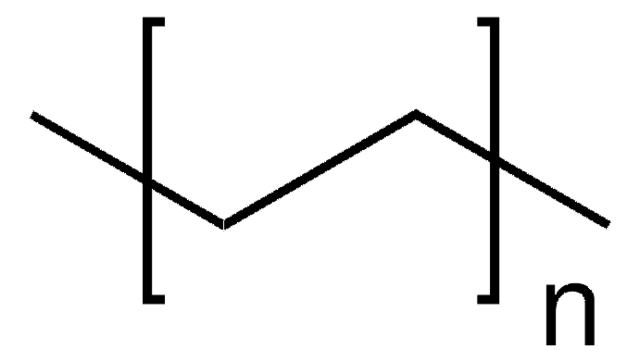427861
Polypropylene
Isotactic, average Mw ~340,000, average Mn ~97,000
About This Item
Productos recomendados
Quality Level
form
beads
melt index
4 g/10 min (230°C/2.16kg)
mol wt
average Mn ~97,000
average Mw ~340,000
hardness
99 (Rockwell R, ASTM D 785-A)
transition temp
Tm 160-165 °C
density
0.9 g/mL at 25 °C (lit.)
application(s)
battery manufacturing
SMILES string
CC=C
InChI
1S/C22H42O3/c1-2-3-4-5-11-14-17-20-21(25-20)18-15-12-9-7-6-8-10-13-16-19-22(23)24/h20-21H,2-19H2,1H3,(H,23,24)/t20-,21+/m1/s1
InChI key
NSYDMBURIUSUDH-RTWAWAEBSA-N
¿Está buscando productos similares? Visita Guía de comparación de productos
Categorías relacionadas
Application
Features and Benefits
Storage Class
11 - Combustible Solids
wgk_germany
WGK 3
flash_point_f
Not applicable
flash_point_c
Not applicable
ppe
Eyeshields, Gloves, type N95 (US)
Elija entre una de las versiones más recientes:
¿Ya tiene este producto?
Encuentre la documentación para los productos que ha comprado recientemente en la Biblioteca de documentos.
Los clientes también vieron
Global Trade Item Number
| Número de referencia del producto (SKU) | GTIN |
|---|---|
| 427861-3KG | |
| 427861-1KG | 4061832104744 |
Nuestro equipo de científicos tiene experiencia en todas las áreas de investigación: Ciencias de la vida, Ciencia de los materiales, Síntesis química, Cromatografía, Analítica y muchas otras.
Póngase en contacto con el Servicio técnico


